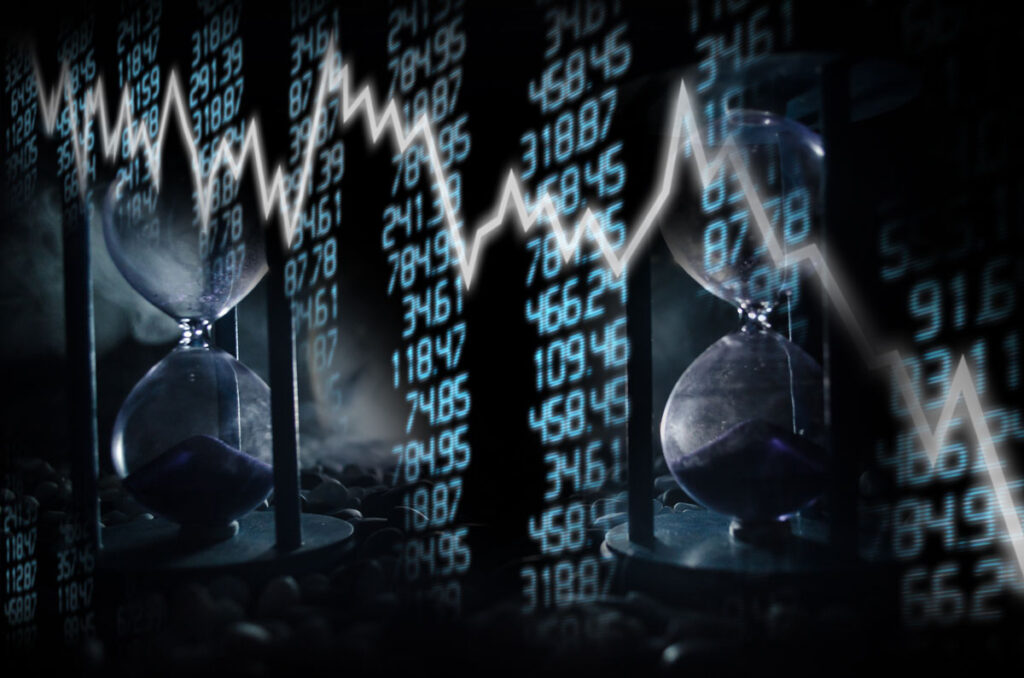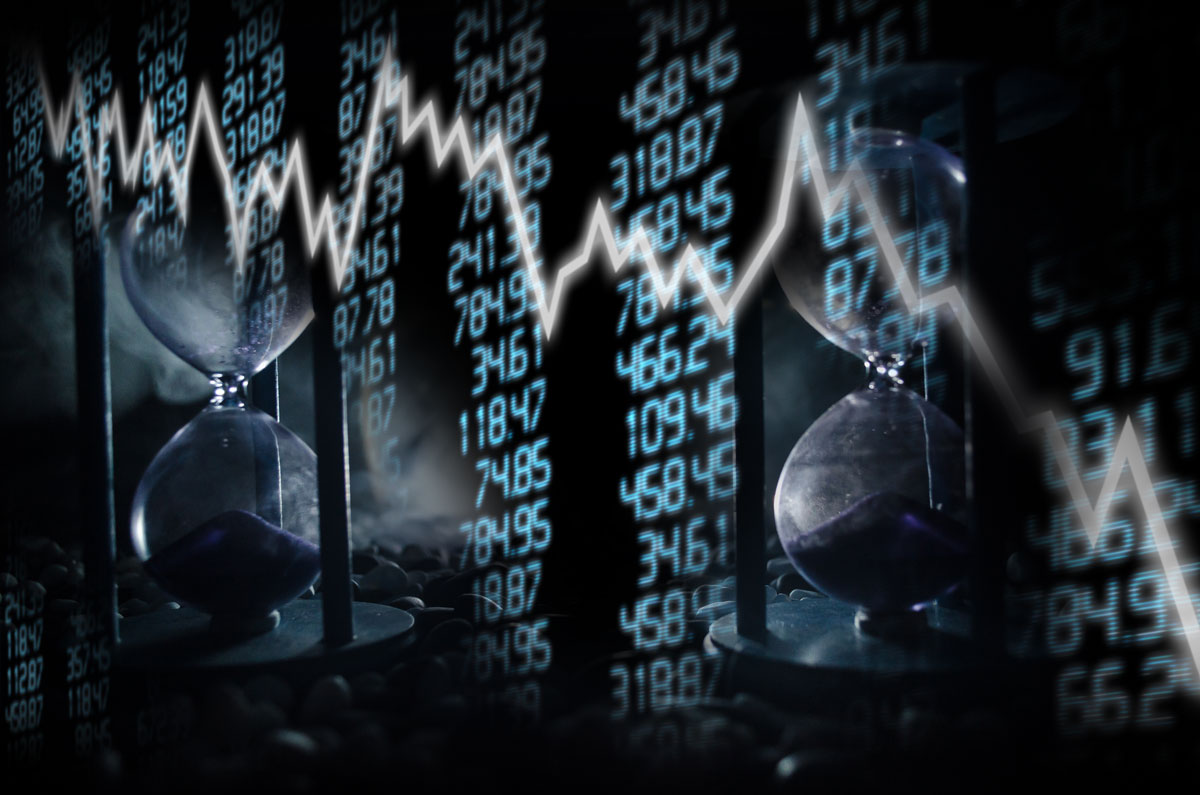
Above: Photo Collage / Lynxotic
Bond jump should have been seen coming, yet the reaction is nevertheless a big rush to the exits
In what some are calling a Taper Tantrum, the markets dropped with a sense of purpose today, with little bounce after the close in the futures market. With Fed rate hikes now a certainty, inflation concerns real, and bond yields spiking today, there were plenty of things to point to as catalysts.
This could be, and this is extremely likely regardless of what endless permanent-bull commentators would have you believe, the start of a tough two months, with late September and October being known as a very dangerous time in markets, especially whey they exhibit pre-crash signs and warnings.
Insane valuations that have preceded past September / October disasters are back
It’s unbelievable that the fall of 2008, when the financial crisis came to a head with the Lehman Brothers collapse, was 13 years ago, and the prior peak in November 2007 was a full 14 years.
I guess we can observe that we now have the iPhone 13, with the iPhone “1” which was just called “iPhone” at the time, has been marking the time with yearly iterations, not always named in sequence:
iPhone: June 29, 2007
iPhone 3G: July 11, 2008
iPhone 3GS: June 19, 2009
iPhone 4: June 24, 2010
iPhone 4S: October 14, 2011
iPhone 5: September 21, 2012
iPhone 5S & 5C: September 20, 2013
iPhone 6 & 6 Plus: September 19, 2014
iPhone 6S & 6S Plus: September 19, 2015
iPhone 7 & 7 Plus: September 16, 2016
iPhone 8 & 8 Plus: September 22, 2017
iPhone XS, XS Max: September 21, 2018
iPhone 11, Pro, Pro Max: September 20, 2019
iPhone 12, Mini, Pro, Pro Max: October 23, 2020
iPhone 13, Mini, Pro, Pro Max, September 24, 2021
And during all these years, for the most part the artificially inflated Fed “bubble of everything” has continued.
Here is a disturbing chart, courtesy of Elliott wave International at Elliottwave.com:
This behavior, seen across nearly all markets since extreme measures were taken to respond when the March 2020 pandemic crash occurred, has been building to a crescendo. And today was a tiny pin-prick that could augur ill for October.
What this has led to, naturally, is an overvaluation beyond anything seen in modern times, perhaps 500 years. The previous all-time-peak for overvalued stocks (S&P) was in March 2000. August 2021 is far beyond that peak and likely will stand as the most overvalued moment for decades.
Above: photo courtesy of Elliott Wave International
Unless, that is, somehow the insane valuations are pushed even higher. Which is unlikely, but not impossible, given the state of delusional euphoria that pervades the financial markets.
Many 2021 characteristics, such as the Crypto, NFT frenzy will be seen in a similar light to the tech stocks in 2000 or Real estate in 2007
There’s a sense that it is normal for bored apes NFTs to experience a multimillion dollar bidding wars, or for crypto alt coins with dog mascots to explode 10,000% or more during this, possibly final phase, of what has been called the “everything bubble”.
And why not? If you bought and held almost anything in March 2009 or again at the bottom of the crash on March 16, 2020, then you have seen nearly continuous gains that you’d be eager to risk on, well, anything.
And if you were 10 years old in the year 2000, you’d not have known about NASDAQ drops that take around 13 years to regain what was lost after a 1 year bear market, so why worry?
Perhaps the Fed and the markets seemingly infinite ability to expand and inflate will go on for years. Or the next bear, possibly the one that already kicked off today, and will accelerate into October, is one to take seriously.
- Apple near deal to produce film of Michael Lewis Book on Sam Bankman-Fried & FTX Collapse
- Ridley Scott to Produce ‘The Infinite Machine’ ETH Origin Story from Camila Russo’s Book
- Bitcoin’s Origins get Well-timed Mention in Elon Musk Tweet
- The Best Books on Cryptocurrency
- ‘Ethereum is Neutral, I Am Not’ Vitalik Buterin Calls Out Vladimir Putin: Glory to Ukraine
Find books on Political Recommendations and many other topics at our sister site: Cherrybooks on Bookshop.org
Enjoy Lynxotic at Apple News on your iPhone, iPad or Mac.
Lynxotic may receive a small commission based on any purchases made by following links from this page
